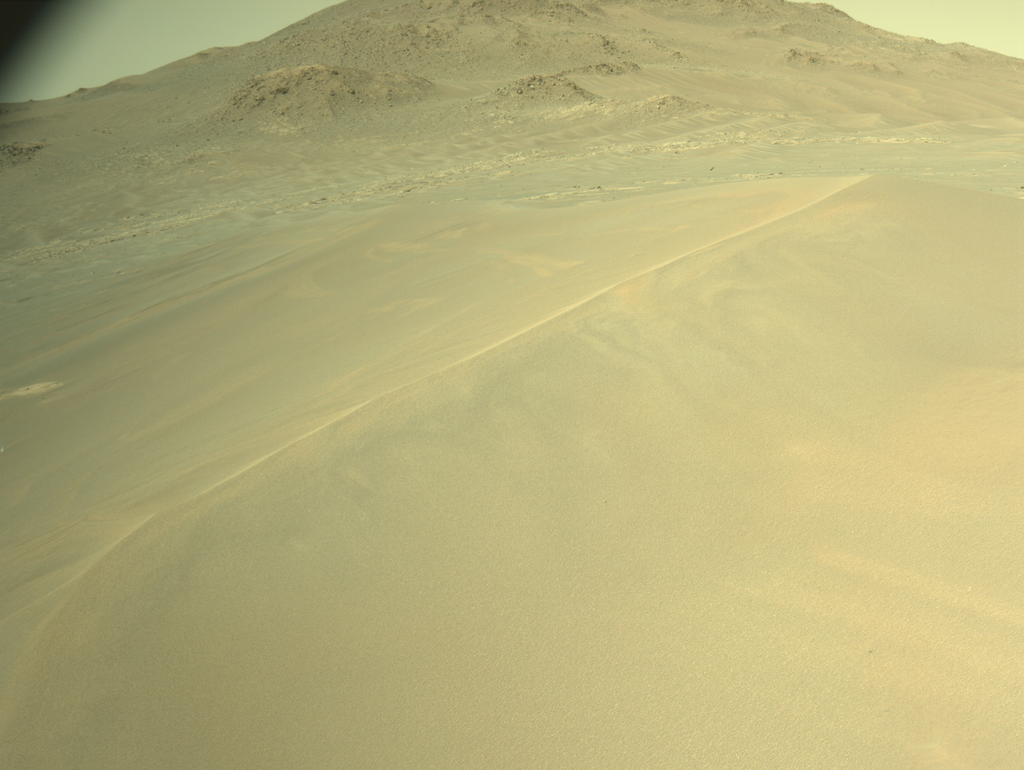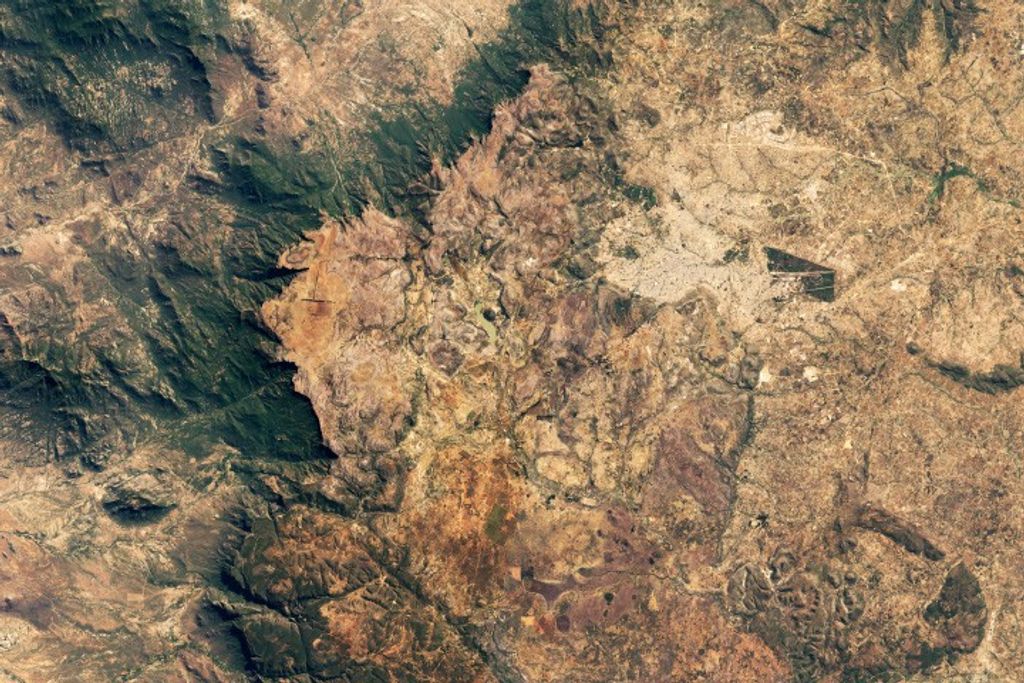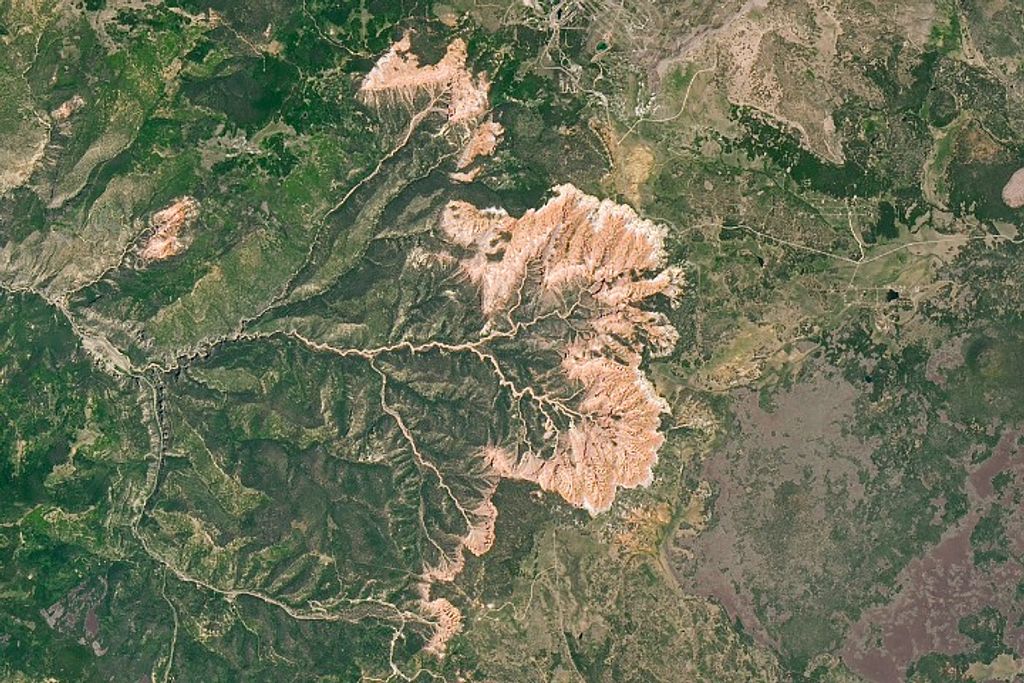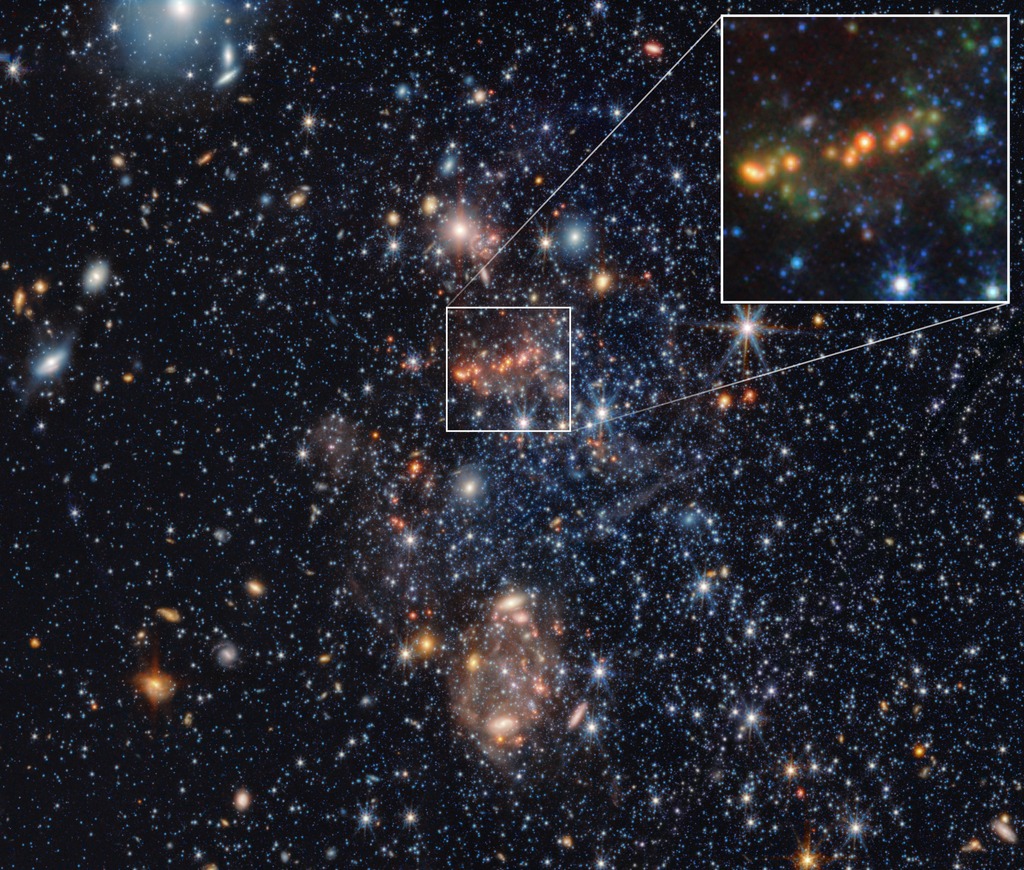1 min read
NGC 6072 (MIRI Image)
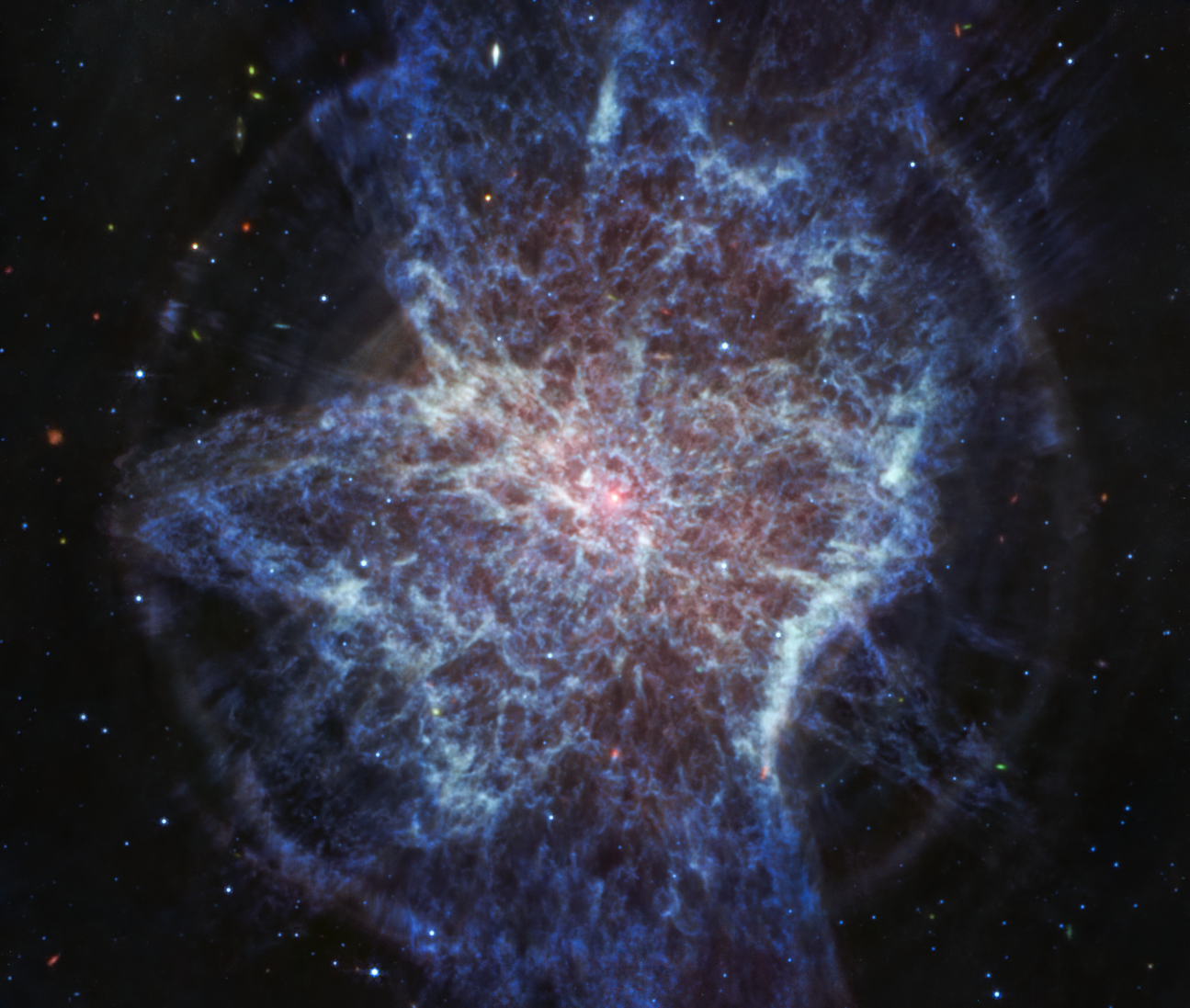
The mid-infrared view of planetary nebula NGC 6072 from NASA’s James Webb Space Telescope shows expanding circular shells around the outflows from the dying central star, which astronomers suspect is the pinkish white dot at the center of the image. The longer wavelengths captured by Webb’s MIRI (Mid-Infrared Instrument) highlight the dust being cast off by the central dying star.
In this image, the blue represents cool molecular gas that is seen in red in the near-infrared image from Webb’s NIRCam (Near-Infrared Camera) due to color mapping.
Read the full image description.
About the Object
- R.A. PositionR.A. PositionRight ascension – analogous to longitude – is one component of an object's position.16:12:58.4
- Dec. PositionDec. PositionDeclination – analogous to latitude – is one component of an object's position.36:13:49.3
- ConstellationConstellationOne of 88 recognized regions of the celestial sphere in which the object appears.Scorpius
- DistanceDistanceThe physical distance from Earth to the astronomical object. Distances within our solar system are usually measured in Astronomical Units (AU). Distances between stars are usually measured in light-years. Interstellar distances can also be measured in parsecs.About 3,300 light-years
- DimensionsDimensionsThe physical size of the object or the apparent angle it subtends on the sky.Image is 2.4 arcminutes across (about 2.3 light-years)
About the Data
- Data DescriptionData DescriptionProposal: A description of the observations, their scientific justification, and the links to the data available in the science archive.
Science Team: The astronomers who planned the observations and analyzed the data. "PI" refers to the Principal Investigator.This image was created with Webb data from proposal: 6554 (M. Garcia Marin). Image processing: Alyssa Pagan (STScI).
- InstrumentInstrumentThe science instrument used to produce the data.MIRI
- Exposure DatesExposure DatesThe date(s) that the telescope made its observations and the total exposure time.29 July 2024
- FiltersFiltersThe camera filters that were used in the science observations.F770W, F1130W, F1280W, F1800W
- Object NameObject NameA name or catalog number that astronomers use to identify an astronomical object.NGC 6072; IRAS F16097-3606
- Object DescriptionObject DescriptionThe type of astronomical object.Planetary nebula
- Release DateJuly 30, 2025
- Science ReleaseNASA’s Webb Traces Details of Complex Planetary Nebula
- CreditImage: NASA, ESA, CSA, STScI

This image is a composite of separate exposures acquired by the James Webb Space Telescope using the MIRI instrument. Several filters were used to sample wide wavelength ranges. The color results from assigning different hues (colors) to each monochromatic (grayscale) image associated with an individual filter. In this case, the assigned colors are: Blue: F770W, Cyan: F1130W, Green: F1280W, Red: F1800W
Related Images & Videos
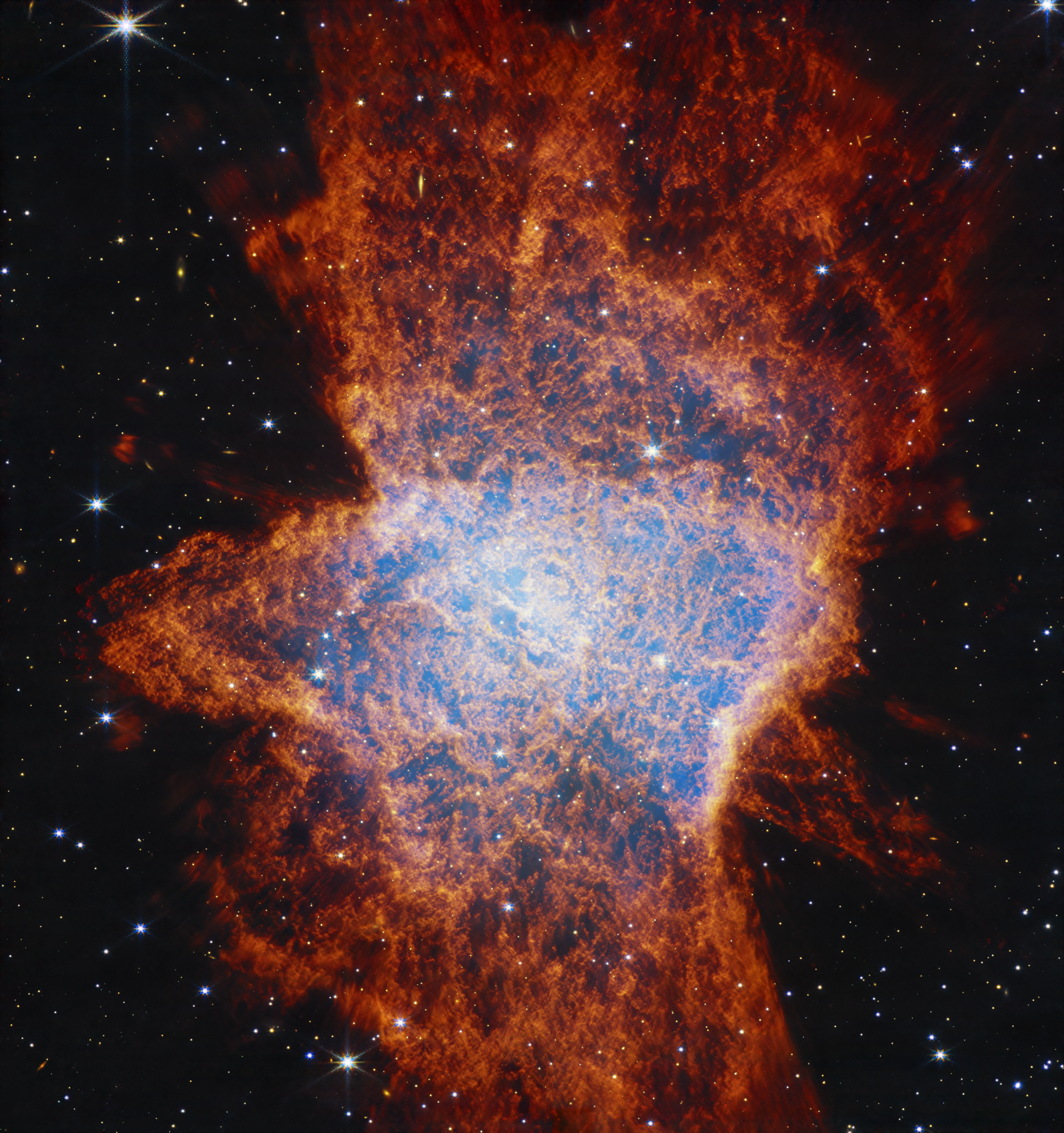
NGC 6072 (NIRCam Image)
NASA’s James Webb Space Telescope’s view of planetary nebula NGC 6072 in the near-infrared shows a complex scene of multiple outflows expanding out at different angles from a dying star at the center of the scene. In this image, the red areas represent cool molecular gas, for exa
Share
Details
Laura Betz
NASA’s Goddard Space Flight Center
Greenbelt, Maryland
laura.e.betz@nasa.gov
NASA, ESA, CSA, STScI



